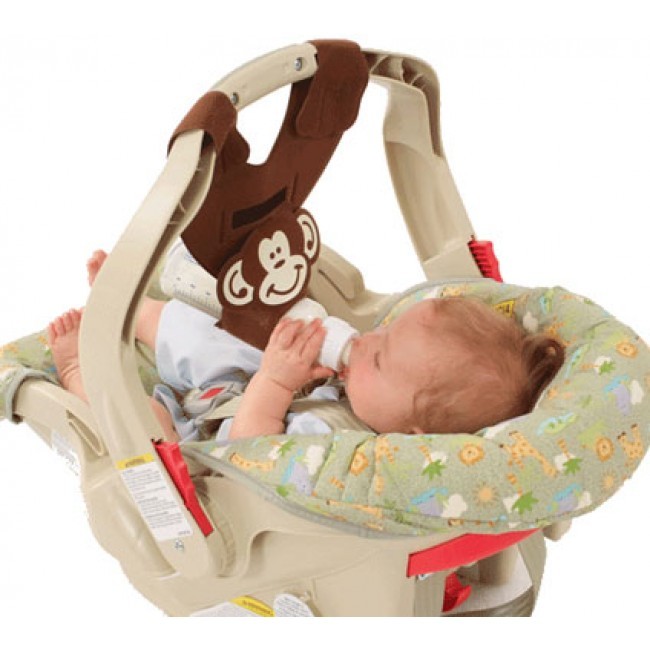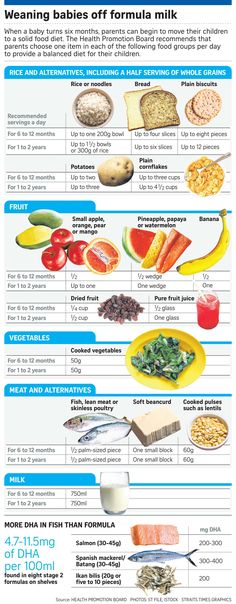Baby food recipes 10 months vegetarian
Best vegetarian recipe ideas for babies
Weaning babies can get all the energy and most of the nutrients they need on a vegetarian – or mainly vegetarian – diet, as long they're eating a well-balanced variety of foods, including eggs and cheese.
As your baby starts to eat more solid food and progresses on to 3 meals a day, though, it's worth knowing that because a vegetarian diet can be high in fibre, you child could feel 'full' before they have taken in enough calories and nutrients. The NHS advice is to offer plenty of high-calorie foods, such as hummus or full-fat yoghurt and to include lower-fibre carbs, such as white bread and rice, alongside wholemeal bread and wholegrain rice.
Here's our pick of the best vegetarian recipes for babies...
1. Butternut squash and carroty mash with thyme
A velvety combo of carrot, potato and squash, with a delicate touch of thyme. Works equally well with pumpkin or swede, instead of squash. Suitable from 6 months.
2. Courgette, pea and kale puree
Three gorgeous greens, blended to a smooth and tasty veggie puree. Suitable from 6 months.
3. Sweet potato and basil puree
Fresh basil leaves add a slightly peppery edge to this sweet and simple puree. Suitable from 6 months.
4. Tom Daley's boiled egg and avocado soldiers
A quick, nutritious finger-food meal. If you can stop yourself nibbling it first... Suitable from 6 months.
5. Sweetcorn and sweet potato pasta sauce
A lovely, cheesy 3-veg (there's cauliflower in there, too) sauce that's super-tasty with penne or farfalle pasta. Suitable from 6 months.
6. Cheesy broccoli and cauliflower puree
A properly gooey veg-and-cheese combo. Makes enough for 6 portions. Suitable from 7 months.
6. Aubergine and red pepper curry
A mild chuck-in-the-pan-and-simmer, baby-friendly vegetable curry. Suitable from 7 months.
Suitable from 7 months.
8. Risotto with butternut squash
A gently textured baby dish, with tomatoes and cheese adding flavour to the squash and rice. Suitable from 8 months.
8. Cheesy sweetcorn fritters
Just the right size for small hands, these tasty fritters are great for encouraging self-feeding. Suitable from 8 months.
9. Chickpea and red pepper couscous
Couscous made with (low-salt) vegetable stock has a lovely subtle flavour that combines very tastily with chickpeas. Suitable from 8 months.
11. Baked sweet potato chunks
Finger-food par excellence, with a delicious dusting of paprika and herbs. Suitable from 8 months.
12. Vegetarian lentil cottage pie
A protein-packed, cheesy-potato-topped winner. Makes enough for 6 portions (or some grown-ups tucking in, too). Suitable from 8 months.
12. Meat-free spaghetti bolognese
Made with soya mince, mushrooms, carrots, onion, peppers, tomatoes, herbs – and a sprinkling of cheese. Suitable from 8 months.
Suitable from 8 months.
13. Roasted vegetable kebabs
Chunks of fresh veg, marinated in lemon, pepper and oil and then oven-roasted: yum! Delicious cold the next day, too. Suitable from 9 months.
14. Mild vegetable korma
Five different veggies, gently spiced with curry paste, ginger, coconut and garlic. Suitable from 9 months.
15. Mini jacket potatoes with ratatouille
A super-nutritious multi-veg sauce that goes brilliantly with baked spuds– or even piled on toast slices. Suitable from 9 months.
15. Potato, carrot and courgette rosti
Lovely, grab-able grated-vegetable cakes. Suitable from 9 months.
16. Macaroni cheese with broccoli and cauliflower
A classic dish, with extra veggie heft. Makes enough for 8 portions. Suitable from 9 months.
17. Winter vegetable casserole
A tasty 5-veg stew, with a cheesy breadcrumb topping.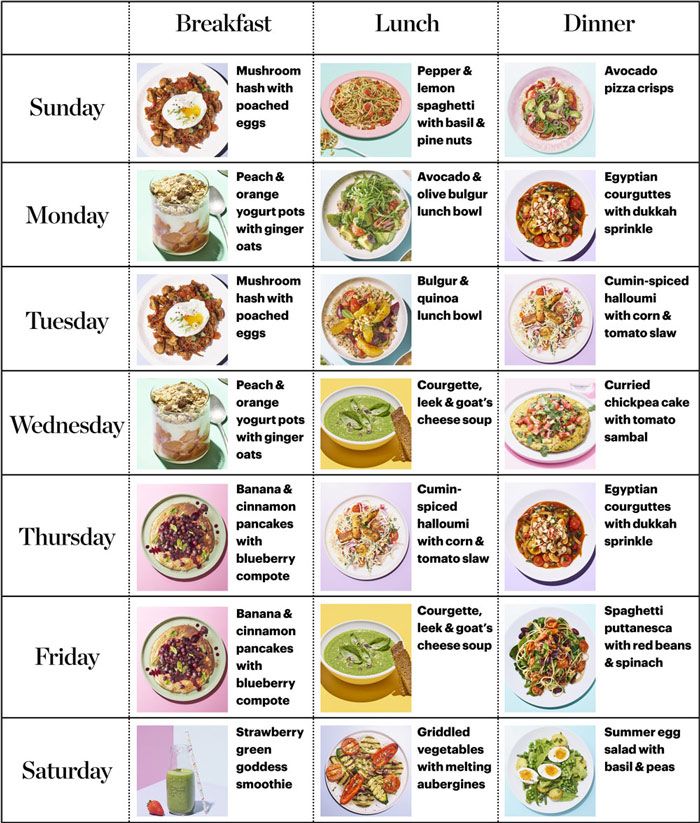 Suitable from 9 months.
Suitable from 9 months.
18. Baby dhal with pitta
Coriander, turmeric and cinnamon add a classic dahl flavour to sweet potato and red lentils. Suitable from 10 months.
19. Rigatoni with five-veg sauce
A Mediterranean green, yellow and red veg fest, topped off with a pinch of organo. Suitable from 10 months.
20. Tortilla (Spanish omelette)
This one's delicious hot or cold – and slices well into baby-finger-size strips for self-feeding. Suitable from 10 months.
21. Aubergine and tomato bake
A tasty 2-veg bake, with layers of melted mozzarella and a sprinkling of Cheddar on top. Suitable from 10 months.
22. Wholesome bean casserole
Kidney beans cooked with carrots, tomatoes, celery, onion and parsley. Lovely with a dollop of yoghurt or grated cheese on top. Suitable from 10 months.
23. Vegetarian nuggets
Broccoli, cauliflower, peppers, carrots and sweetcorn, packed into pick-up-able crispy-coated chunks. Suitable from 11 months.
Suitable from 11 months.
24. Spinach and parmesan pasta
A little creme fraiche and lemon makes this simple iron-packed pasta dish taste creamy and special. Suitable from 11 months.
25. Vegetable lasagne with green lentils
A lovely lentilly version of the Italian classic, with mustard and cayenne pepper perking up the cheese sauce. Suitable from 11 months.
26. Vegetarian sausages
Onion and carrots rolled in a cheesy breadcrumb coating. Makes 8 large sausages, so you freeze some for another day. Suitable from 11 months.
27. Pepper, broccoli and cheese pasta bake
A super-easy, oven-baked dish, with mushrooms and tomatoes and a melted cheese topping. Suitable from 11 months.
28. Quesadilla fingers
Grilled peppers, cheese and sweetcorn, with a touch of chilli, deliciously squished between folded tortilla. Suitable from 11 months.
Read more. ..
.. - Best baby purees
- Best dairy-free recipes for babies
- How to make your roast friendly for vegans, vegetarians and gluten-free or dairy-free diets
12 Baby-Approved Veggie Recipes - Del's cooking twist
These 12 baby-approved veggie recipes are healthy, nutritious, and perfect for the whole family. Whether you’re following a baby-led weaning approach or simply want to educate your little one to eat like grown-ups as early as possible, these recipes will spare you some precious time in the kitchen. Read under each one for possible tweaks to the original recipe, possible food allergens to take into account, and serving suggestions so baby can eat by himself (or almost).
Baby food is boring! Or let me rephrase: baby too, can have fun meals. I’m a firm advocate of the idea that “baby food” should not exist, or at least not in the way it does. So when I got asked many times if I could create some baby recipes, my answer was no. Always. I’m not an expert at baby nutrition and I do not intend to be. The main purpose of this site is and will remain the same: create some nutritious meals for the whole family.
Always. I’m not an expert at baby nutrition and I do not intend to be. The main purpose of this site is and will remain the same: create some nutritious meals for the whole family.
How to feed my baby?
Based on my recent experience as a mom of a 9-month-old baby, the question of how to feed my baby came to the table anyway. How to feed an almost toothless baby? (Baby Lucie’s first teeth just pointed out last week). Should I follow a baby-led weaning approach? Or should I feed my baby with basic purees?
Eventually I purchased a couple of cookbooks for babies, made tons of research on the web, and ended up following my instinct. Of course, this implies that you make some basic research beforehand (baby nutrition, food allergies, chocking hazards, etc.). On that matter, you can check these 8 foods to avoid feeding your baby. With all that in mind, 3 things came to my mind about feeding my baby:
- Do not overthink, trust your instinct as a mom. Generally speaking, I realized that when I was feeling unsecure with the idea of giving let’s say a chunk of banana to my baby, it meant I was not ready for it and baby probably wouldn’t either.
 Give yourself some time, observe how your baby eats and swallows day after day, and soon enough you will find yourself giving bigger chunks with confidence.
Give yourself some time, observe how your baby eats and swallows day after day, and soon enough you will find yourself giving bigger chunks with confidence. - Educate your little ones to eat everything and hence discover the taste of each ingredient separately. This can be basic single-ingredient purees or soft vegetable sticks if you follow a baby-led weaning approach.
- Help them to eat like adults as early as possible in life.
What are baby-approved veggie recipes?
Baby-approved veggie recipes are simple recipes you can find on the blog, that are also perfect for our little ones from 6+ months. And the best part: They’re adult-friendly too! 😉 Here’s what you can expect:
- Healthy and nutritious recipes, prepared with wholesome ingredients.
- Real foods only (no processed food, no dyes, no preservatives, no chemicals).
- Recipes loaded with fruits and veggies.

- Sugar-free breakfast and dessert ideas.
- Easy to handle for your little ones so they can eat by themselves.
- Soft textures and foods that are easy to chew/swallow.
- Perfect for a led-weaning approach or to introduce solid foods to your little ones.
- Suggestions to tweak the original recipes and make them baby-friendly.
Savory baby-approved recipes
1. Healthy Spinach Pancakes
Healthy Spinach Pancakes. Made right in the blender, these green pancakes come in handy for breakfast, lunch or dinner. Just play with the toppings to make them more adult or baby/toddler friendly.
- What’s in there? Baby spinach, chickpea flour, egg, oat milk.
- Why we love them? They’re perfect for picky eaters who don’t want to eat their greens. Also, their soft and fluffy texture makes them safe for baby to swallow.

- Serving suggestions: Cut them into stripes so your little one can hold them. They’re delicious dipped in plain yogurt but also served with blueberries.
2. Red Lentil Patties
Red Lentil Patties. These patties are nutrition in a nutshell. Bursting with earthy flavors, oozing with plant-based protein, they’re definitely a crowd-pleaser. Both kids and adults will LOVE them.
- What’s in there? Red lentils, carrots, onions, rolled oats. You can make them with or without cilantro (you can replace with spinach for instance).
- Why we love them. They’re vegan, gluten-free (if using GF oats), packed with legumes and veggies. It’s pretty much an entire meal. They’re also very soft to chew on, even for toothless babies. Last but not least, they freeze very well.
- Serving suggestions. I like to shape them into small patties to fit in a baby’s hand. You can skip the sauce or replace with a simple yogurt sauce.

3. Grandma’s Nourishing Lentil Soup
Grandma’s Nourishing Lentil Soup. Prepared with 5 ingredients only, this soup is packed with earthy flavors and keeps you warm from the inside.
- What’s in there? Green lentils, chickpeas, sweet potato, butternut squash.
- Why we love it? This soup is very filling and provides its share of plant-based protein, fiber, and vitamins. It makes a perfect meal for your little ones and for yourself too (just add some bread and cheese for a grown-up version).
- Serving suggestion. There is none, the soup will easily adapt to babies, toddlers and grown-ups. You can adjust the consistency to your liking, making it thicker or thinner.
4. Veggie Beet Patties
Veggie Beet Patties. These vibrant patties, naturally colored by the beets are a success every single time, among babies, toddlers and adults indistinctly. Have fun and make them part of a mini-burger using my burger bun recipe: baby Lucie loved them!
Have fun and make them part of a mini-burger using my burger bun recipe: baby Lucie loved them!
- What’s in there? Beets, quinoa, ricotta, breadcrumbs (or rolled oats), onions.
- Why we love them? They’re pretty, nutritious, very tasty, and freeze very well. Oh, and we LOVE to make mini burgers out of them, for a baby-adult burger party!
- Serving suggestion. Like for the other patties recipes, I love to shape them into mini patties for a baby version so that your little ones can eat them by themselves.
5. Red Lentil Stew
Red Lentil Stew. It’s a perfect quick, easy, dal recipe for cozy evenings. Packed with comforting, earthy flavors, it’s nutritious and naturally vegan and gluten-free.
- What’s in there? Red lentils, tomatoes, onions, baby spinach.
- Baby version. Chop spinach to make it easier for baby to swallow.
- Why we love it? It’s such a simple, comforting dish! It’s perfect to feed the whole family and it’s totally baby-approved too.

- Serving suggestion. SKIP THE PINE NUTS (pine nuts) for serving, to avoid chocking hazards.
6. Vegetarian Lentil Shepherd’s Pie
Vegetarian Lentil Shepherd’s Pie. This comforting family dish is a crowd-pleaser. Rich, earthy and packed with flavors, it’s always a hit!
- What’s in there? Lentils, carrots, onions, celery stalks, and seasoning.
- Baby version. Replace red wine for the sauce with balsamic vinegar to make it baby-friendly. You can use either green lentils or black beluga lentils.
- Why we love it? Lentils are iron and fiber-rich, which is perfect for babies. And who doesn’t like mashed potatoes? The dish also freezes easily in portions.
7. Sweet Potato Veggie Patties
Sweet Potato Veggie Patties. Baby Lucie is literally obsessed with sweet potatoes since day 1 she started on solid food. These patties are filling, extremely nutritious, and also delicious wrapped into two burger buns (mostly for an adult version as they are already very filling on their own).
- What’s in there? Sweet potatoes, red lentils, chickpea flour, onions, breadcrumbs.
- Why we love them? They’re packed with earthy flavors, they’re easy to shape into mini burgers for a baby version and they freeze well.
- Serving suggestion. Shape them into mini patties and dip into mashed avocado.
Sweet baby-approved recipes (no sugar)
8. Easy Oatmeal Recipe
Easy Oatmeal Recipe. This is probably the “sweet” recipe we make the most for baby Lucie, and for us too! Almost every morning she has her bowl of oatmeal, with various toppings depending on the mood and what we have at hand.
- What’s in there? Rolled oats, vegetable milk and/or water. For a thicker version, you can add plain yogurt too.
- Baby version. Oatmeal makes an easy first meal for very small babies starting from 5+ months. To do so you can pulse them in a food processor until finely ground.
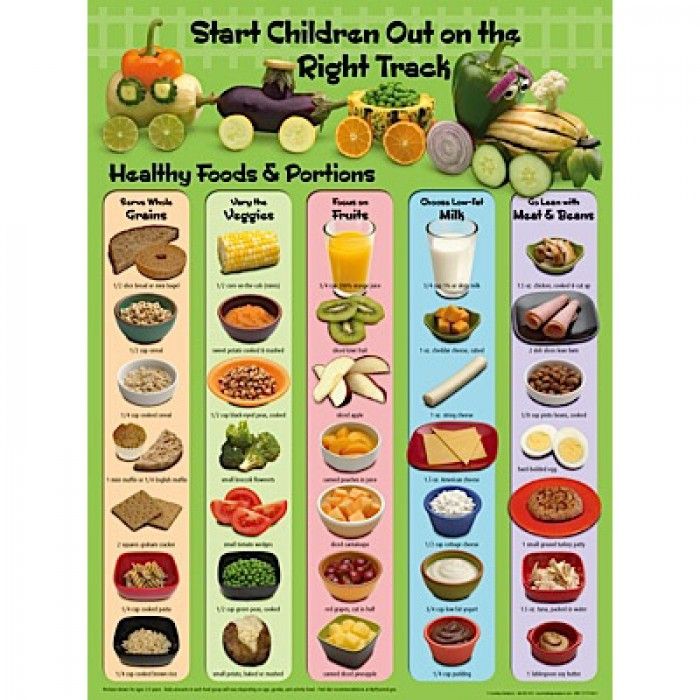 When babies are a little bit older, you can use rolled oats directly.
When babies are a little bit older, you can use rolled oats directly. - Possible topping variations. I love to add homemade unsweetened applesauce, pureed pears, blueberries, mashed or slice bananas, etc. You can also add a Tablespoon of ground flaxseed, chia seeds, or if baby has passed the allergen test of nuts, a spoonful of nut butter of your choice.
- Why we love it? This is probably the most customizable recipe.
- Serving suggestion. In a bowl; just make sure it is not too hot when serving it to baby.
9. Healthy Whole Wheat Apple Bread
Healthy Whole Wheat Apple Bread. Essentially prepared with fruits and wholesome ingredients, this recipe is a winner that both babies and adult will love.
- What’s in there? Apples, apples, apples. Well, almost. And whole wheat flour as well.
- Baby version. Replace the amount of sugar with the same amount of unsweetened applesauce (½ cup / 100g).
 Also, SKIP the honey entirely for babies under 12 months.
Also, SKIP the honey entirely for babies under 12 months. - What we love about it: The bread is almost entirely naturally sweetened by the apples and unsweetened applesauce. The bread is also super moist, which is easy for baby to swallow.
- Serving suggestion: Cut each slice into stripes so baby can hold them himself.
10. Banana Pancakes
Banana Pancakes. Babies love bananas, and so do we! So why not make these fluffy banana pancakes for breakfast from time to time? They make an easy first baby food when you make the switch from purees to solids.
- What’s in there? Bananas, flour (use whole wheat flour instead), eggs, milk, oil.
- Baby version. I would replace all-purpose flour with whole-wheat flour (use a 1:1 ratio) to make them more nutritious. Also, skip the sugar entirely and simply use ripe bananas. Last but not least, I recommend plant-based milk over dairy milk for babies under 1 year old.

- Why we love them? They’re extremely fluffy, which makes them perfectly safe for your little ones to swallow even when they don’t have any teeth.
- Serving suggestion. Cut them into stripes so your baby can hold them and eat by himself.
11. Sugar-Free Almond Butter Banana Muffins
Sugar-Free Almond Butter Banana Muffins. I’m obsessed with these muffins. Skinny, sugar-free yet very nutritious, they come a handy when you’re looking for a little healthy snack. Make some of them into mini muffins and without the chocolate chips to make them baby-friendly.
- What’s in there? Bananas, rolled oats, plain yogurt, almond butter.
- Baby version. Skip the mini chocolate chips, as babies are not supposed to eat chocolate before 1 year old. Replace with blueberries or serve plain.
- Important note: Make sure you do a test with almond butter separately first, to check if your baby has any allergies with nut butter.

- Why we love them? They’re yummy and loaded with good-for-you ingredients.
- Serving suggestion. Make them mini muffins for a baby-version. Lucie loves them!
12. Whole Wheat Waffles
Whole Wheat Waffles. They are fluffy, nutritious and count among our favorites for breakfast. But there is more: babies love them too! Get ready for a great family breakfast!
- What’s in there? Whole wheat flour, eggs, buttermilk, vegetable oil, sugar (skip it).
- Baby version. Skip the sugar entirely, and consider a non-dairy buttermilk version for sensitive tummies. Also, unlike the photo above, don’t use any nuts or syrup as of serving options for obvious reasons (chocking hazards, the no-sugar rule).
- Why we love it? They’re fluffy and easy to chew on. Perfect when baby is teething!
- Serving suggestion. Make them into triangles and serve them along with fresh blueberries and yogurt.

I hope these recipes will have inspired you to cook some delicious meals that are perfect for the entire family, baby included. Note that this is a non-exhaustive list, and you will probably find some other baby-approved recipes while crawling the site. Also, remember that every baby is different, with his very own pace, so if for any reason he’s still not ready to eat one of the recipe listed above, simply postpone it for later. On that note, have fun and enjoy your meal!
Lastly, if you make one of the 12 Baby-Approved Veggie Recipes listed above, be sure to leave a comment and/or give this recipe a rating, letting me know how you liked it. And of course, don’t forget to tag me on Instagram! Thank you and enjoy!
Children's vegetarian menu. Vegetarian recipes for children
Vegetarianism is not a diet, it is a philosophy of life. A child can be a vegetarian if that is the philosophy of the family. If parents have embarked on this path, they should know that with a high degree of probability the child may be deficient in a number of vitamins and minerals.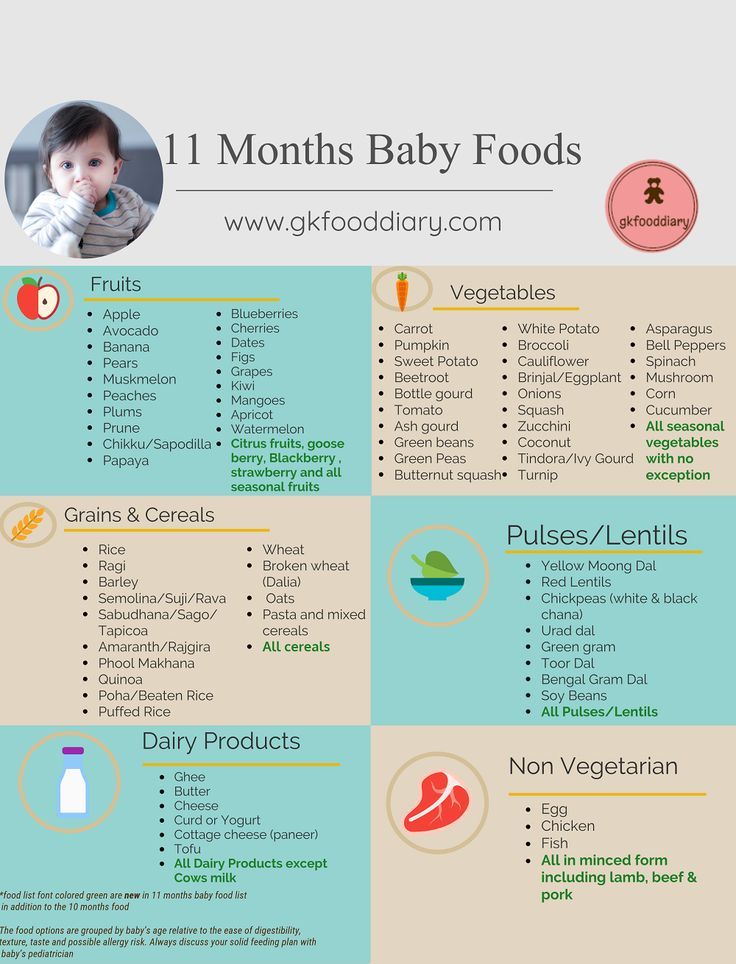
Things to know about vegetarian diets
Vegetarian diets are high in carbohydrates, dietary fiber, omega-6 fatty acids, vitamin E, folic acid, vitamin C, carotenoids, and magnesium. At the same time, these diets are low in protein, saturated fat, long-chain omega-3 fatty acids, vitamin B12, retinol, vitamin D, calcium, zinc, and iron. nine0003
How to avoid vitamin and mineral deficiencies?
Vegetarian diets that include dairy products and eggs do not generally carry a risk of malnutrition in children. Exclusively plant-based diets, on the contrary, are deficient in certain nutrients.
Particular attention should be paid to the intake of products containing protein. The two main sources of protein are grains and legumes. Among the first: wheat in all its forms (pasta, various cereals), refined or whole grain rice, corn grains or cereals (polenta or hominy), rye, buckwheat, barley, oats, millet. From legumes, you should pay attention to lentils, beans, all types of peas, beans, in the absence of an allergy to soy (soy tofu). Iron will also come with these products. nine0003
Iron will also come with these products. nine0003
Choose foods fortified with iron
Known to be the leaders in iron content:
To improve the absorption of zinc, soaking and sprouting legumes, grains, and seeds is recommended. Calcium with a relatively high level of absorption is found in green vegetables with a low content of oxalates (broccoli, Brussels sprouts). Adequate dietary sources of alpha-linolenic acid are nuts, flaxseed, soybean, canola, hemp and linseed oils. Vegetable oils, nuts, and soy milk are valuable food sources of vitamin D. nine0003
Important!
Children and vegetarianism are compatible, but such children need to be regularly examined, their diet adjusted and shown to a doctor to determine the sufficiency of vitamins and minerals.
It is worth adding that the diet should be focused on products that are as useful as possible and saturated with essential substances. These include whole grains and cereals, leafy vegetables, legumes, sesame seeds, nuts and wheat germ, and soy milk. Such measures will effectively serve to fill the needs of the baby's body. nine0083
Repost
I am often asked what my vegetarian child eats. And I decided to share our weekly menu, suddenly someone will be inspired.
We try not to give sweets (well, sometimes ...) - it seems to me that children under 3 years old do not need them, if only vegan pastries are in my performance. The child receives sugar from honey, dried fruits, fruits.
I enrich dishes with oils. For example, in morning cereals I add sesame oil - a source of omega-3,6,9. In salads - olive and linseed. For toast, bread, pasta, cereals - flaxseed and cedar.
Smoothies with Chia seeds are an excellent source of omega for both children and adults. The slippery grains add texture to the smoothie, they are delicious, very healthy, and are considered a superfood, which, by the way, is inexpensive. During the day, my son only drinks water with lemon, ginger (sometimes honey). No tea, no packaged juices. Sometimes we can buy birch or carrot, but we still try to give our own preparation; I can cook (more precisely, bring to a boil and leave to infuse) compote of dried fruits or frozen cherries and rhubarb. All without sugar, in such a drink, cooled to room temperature, you can add honey to taste if you like. nine0003
The slippery grains add texture to the smoothie, they are delicious, very healthy, and are considered a superfood, which, by the way, is inexpensive. During the day, my son only drinks water with lemon, ginger (sometimes honey). No tea, no packaged juices. Sometimes we can buy birch or carrot, but we still try to give our own preparation; I can cook (more precisely, bring to a boil and leave to infuse) compote of dried fruits or frozen cherries and rhubarb. All without sugar, in such a drink, cooled to room temperature, you can add honey to taste if you like. nine0003
The cooking process is reduced to a minimum, we eat only freshly prepared food, we do not reheat or use the microwave. Porridge, basically, I bring to a semi-finished state, then cover with a lid and insist for 7-10 minutes. It is also very convenient to cook cereals in a slow cooker.
Soup is pretty fast. Pour boiling water over fresh or frozen vegetables, cook for 10-15 minutes and turn it off, add vegetable oil (sunflower, olive or other), seasonings, sea salt (I try to alternate, but more often we have Himalayan pink at home) and leave for another 10 minutes, after which I beat in a blender or do not beat, and finally I generously sprinkle with fresh herbs or raw seeds (sunflower, pumpkin).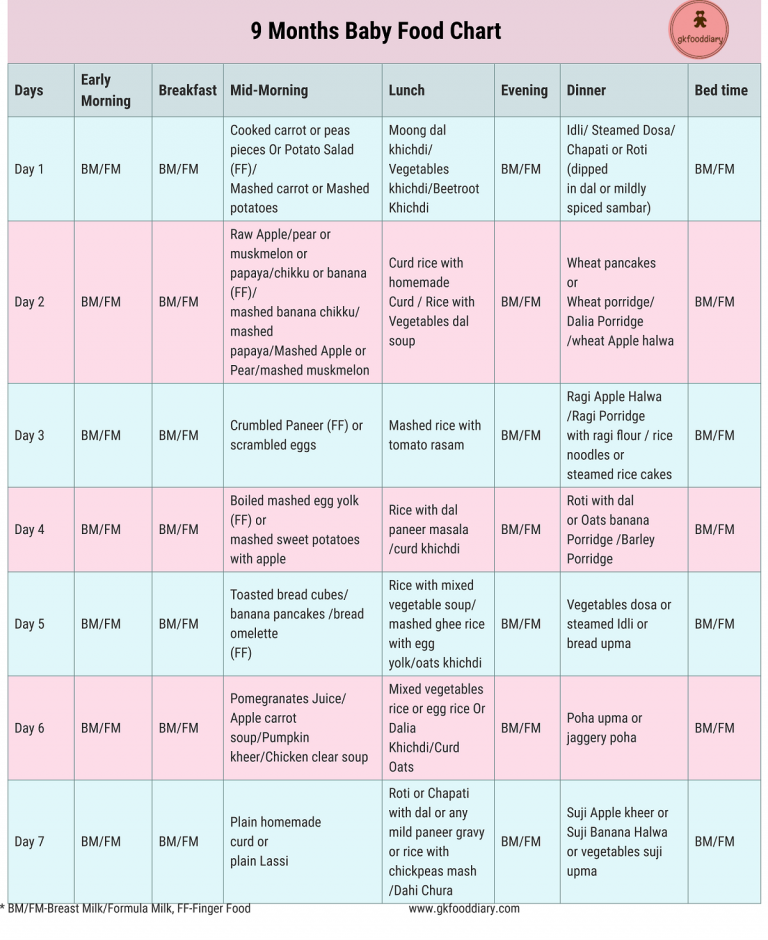 nine0003
nine0003
Most often I cook vegetables for a couple, but sometimes we like to bake in a bag or on a baking sheet. If I fry something in a pan, then only in butter, coconut oil or ghee (clarified butter). The food acquires a caramel, delicate taste and a beautiful amber color.
My child has snacks twice a day - these can be nuts, dried fruits, rye or corn bread, fruits, vegetables. Fruits - always before meals, then they bring maximum benefit - and not as a dessert after (all because fruits are digested so quickly, within 30 minutes, and do not rot under the pressure of other food). nine0003
Now I want to share our weekly menu, which varies depending on the mood, desires, new taste discoveries, as well as adjusted for the season of the year, the country. I try to plan the menu for a week or at least daily in the evening; and if time permits, I like to improvise.
Here is our menu option for the week
Monday
8. 00 smoothies: 2 tbsp. l. chia + banana + water nine0003
00 smoothies: 2 tbsp. l. chia + banana + water nine0003
9.00-9.30 oatmeal on the water with sesame/butter or ghee
11.00-11.30 fresh carrot, apple
13.00 pumpkin soup with whole boiled beans
16.30 a handful of nuts, compote of cherries and rhubarb
19.00 buckwheat with a drop of linseed oil
Tuesday
8.00 raisins, dates, dried apricots
nine.00 pancakes (“nalesniki”) with cottage cheese
13.00 pea soup puree with herbs
16.30 green smoothie - apple juice, spinach, banana, 2 tbsp CHIA
19.00 pasta (buckwheat, spelled or rye) with spinach, mozzarella and tomatoes
Wednesday
8.00 kiwi pudding with chia + vegetable milk
9.00-9.30 oatmeal
13.00 vegetable soup with herbs
16.30 peanut butter bread
19.00 brown rice with steamed vegetables (broccoli, peas, carrots)
Thursday
8. 00 apple
00 apple
9.00-9.30 apple pie (without eggs) with raw sunflower seeds
11.00-11.30 a handful of nuts
13.00 red lentil puree soup with vermicelli and herbs nine0003
16.30 a glass of carrot juice
19.00 buckwheat with linseed oil and seaweed salad
Friday
8.00 pudding - CHIA + banana + cinnamon + rice milk
9.00-9.30 millet with raisins and prunes
13.00 cauliflower and potato soup + with salt and olive oil and bread
16.30 homemade oatmeal cookies, a glass of fresh orange juice nine0003
19:00 barley porridge with carrots and onions
Saturday
8.00 apple
9.00-9.30 cheesecakes (without eggs) with raisins and sour cream
13.00 green soup - broccoli, peas, celery
16.30 carrot cake (without eggs)
19.00 rice noodles with linseed oil and vegetable salad
Sunday
8.



